The NES Castlevania remains a high point in my entirely too lengthy history of gaming, and I know many others feel that way. With luck, this series has provided some small amount of clarity on the qualities that have made this trio of titles so enduring.
On a macro scale, the NES Castlevania titles feature some of the most consistent mechanics and visuals ever shared within a series, yet the objectives and structures built around these fundamentals vary wildly from title to title. Sure, 8-bit Mega Man and Sonic on Genesis retained consistent rules and design from title to title, but neither of them took a radical side excursion into non-linear world design along the way.
As I’ve pointed out with what no doubt must be irritating frequency, the Castlevania games at their best were defined by the attention to detail and consistency the team invested in their worlds. From the accurate level layouts depicted on the castle map overviews to the alignment of background structures from screen to screen, the creators of Castlevania set their work apart by investing it with careful consideration previously unseen in action games, which until then tended to depict their worlds through abstract, repetitive tiles, if at all. The Castlevania teams took great pains to create visual continuity and detail that most people never consciously noticed without compromising the game’s playability—all the more impressive considering the limited palette of visuals available in the memory space of a Famicom Disk System title.
Still, as countless beautiful yet terrible games through the years have proven, no amount of obsessive detail and design discipline can make a poorly designed game fun. Thankfully, the people behind these games were as scrupulous about the nuts-and-bolts of the action as they were the superficies of the backgrounds. From the very beginning, the Castlevania play style operated on a very reliable, intensely consistent set of rules. Simon (and later Trevor) moved at a fixed pace, could jump a set height and distance, and wielded weapons with clearly defined power, range, and purposes. The sequels built on this, granting Simon greater strength and more non-combat tools in Simon’s Quest and gracing Trevor with a squad of companion characters whose play mechanics diverged considerably from his own in Dracula’s Curse—but always logically, and always reliably.
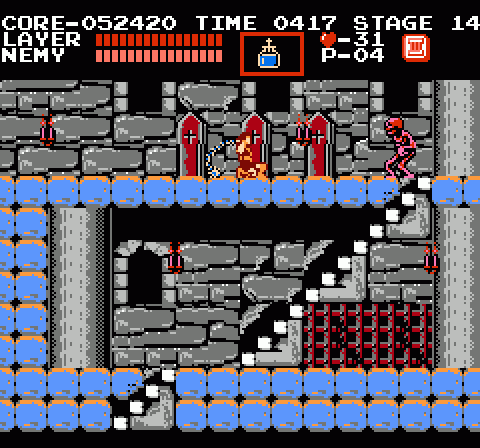
Of the three games, the original Castlevania represents the purest expression of these components. With six levels, it’s the briefest of the games—just long enough to fully explore Simon’s tool set and establish a difficulty curve that goes from “gentle” to “insane” with only one or two wakward bumps along the way. Castlevania laid down the groundwork for the franchise: Not just its NES sequels, but subsequent games on Game Boy, PC Engine, Genesis, and in the arcade.
Castlevania remains the most collected and remade title of the entire franchise. Some of that is due to timing: The game launched right as the Famicom tightened its grip on Japan and the NES began exploding onto the scene in the U.S. It’s fondly remembered by an entire generation of adults who as children obsessed over their new game console, and even if it lacked the depth and technical prowess of its sequels, it stood out amidst so many more aimless and unpolished adventures in the early days of the NES. It established a high-water mark for gaming at the time, and as such became something of a legend… deservedly so. Even beyond direct recreations like Super Castlevania IV and Castlevania Chronicles, you can see its fingerprints all over subsequent games, be it in the enemies, the tools, or the loving recreations of the first stage’s castle entrance.
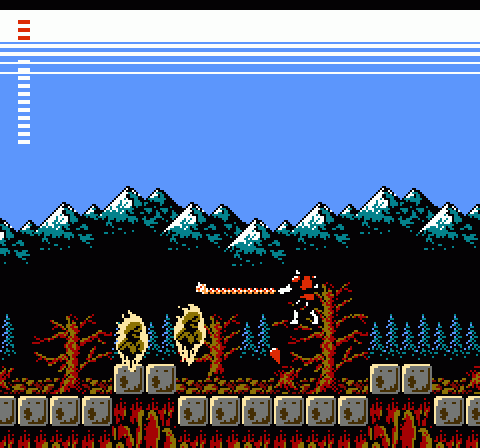
Simon’s Quest took the core mechanics of jumping, whipping, and moving with deliberate precision and spun them in a different direction. Rather than sending players though six linear stages, Simon’s Quest focused on six buildings (five mansions and Castlevania itself) spread across the Transylvanian countryside. The mansions lacked the intense challenge of its predecessor’s stages; instead, much of the difficulty stemmed from navigating both the countryside and the NPCs’ unreliable “tips.” Much of the design discipline that defined the first game proved to be in absence here, with stage and world design unfolding as more of an aimless sprawl.
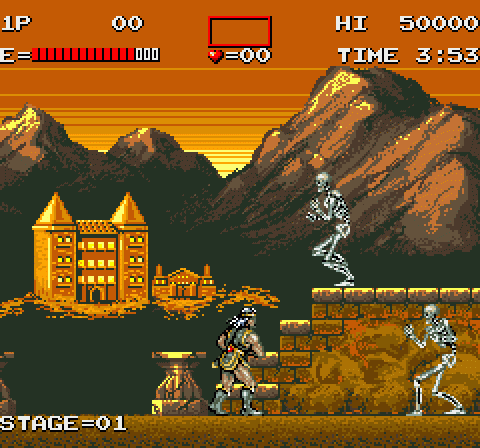
You can guess the reason for this divergence from the two other games released between Castlevania and Simon’s Quest: Vampire Killer and Haunted Castle. The former, a linear but exploration-heavy action game for the MSX computer, probably seemed a better direction to define the console game than the latter, an unevenly designed coin-op game that cuttingly demonstrated the limitations of the arcade format. I don’t doubt the Simon’s Quest team saw a rambling RPG-inspired style as a better means by which to foster longevity than the simple stage-by-stage structure. But, as with so many attempts to reinvent the wheel, they didn’t think it through as thoroughly as they ought, and the result was a well-intentioned mess.
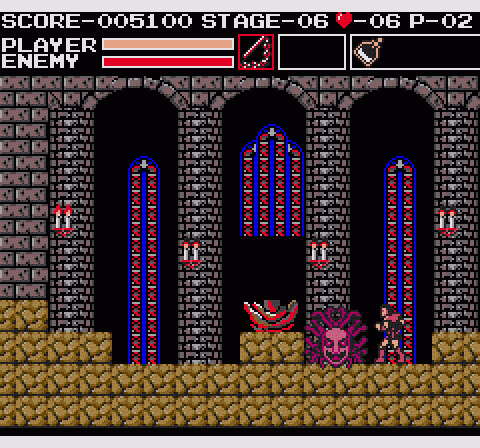
Dracula’s Curse brought a near-perfect balance to the series. The designers returned to the original Castlevania’s format, yet they didn’t completely abandon the concept of exploration and discovery. Instead they encouraged replayability by creating multiple routes through the game and a trio of alternate characters (only one of whom could accompany the hero at a time); despite technically being a linear adventure, Dracula’s Curse consists of 17 stages total, and a player would have to play through the game roughly a dozen times to experience each level in every possible permutation.
This was made possible by the increased cart capacity available by 1989, offering far more space for content than the limited FDS had. Even so, you can see Dracula’s Curse straining within its limitations. The lower map route in particular seems to run out of steam midway, recycling graphics and hazards, and occasionally leaning on questionable level mechanics that feel unworthy of the rest of the adventure. It consists of about a dozen excellent stages and five mediocre ones—though, in fairness, that’s still twice as much content as the entirety of Castlevania, and a far more satisfying experience than any portion of Simon’s Quest offered.
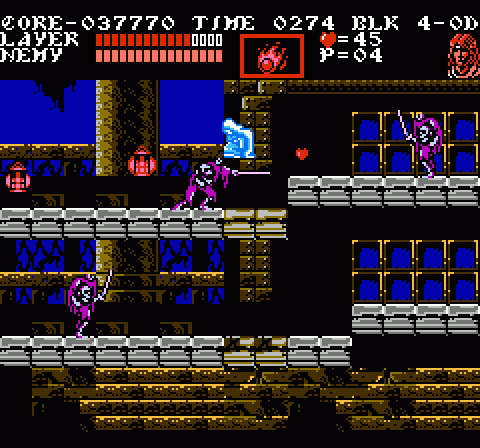
The Castlevania trilogy boasts a remarkable amount of evolution and experimentation—rare enough traits on their own, but in service of genuinely excellent action games? That’s absolutely remarkable and completely cements the series’ place in gaming history. I’m wary of the franchise’s current direction, but the good news for Mercurysteam is that some kind person on the Internet has taken the time to break down what made Castlevania great to begin with. It’s all right here, guys. I can think of worse approaches to game design than looking back to the formative nuts and bolts of the property you’ve been handed.
I’m really sad this ended.
I’ll be eagerly anticipating the blog posts for the inferior sequel/remake titled SCV4.
These Anatomy of a Game series have been pretty fun. I doubt I’ll beat Castlevania III any time soon, but it was interesting to test out each of Trevor’s friends, find out things I wasn’t aware of. Looking forward to more game anatomy times, especially the Zelda stuff.
I would ask you to do an X68000 Castlevania evaluation, but I know that outside of the PSone’s arrange mode with Pinkie Pie-mon Belmont, Dracula from Some Other Game, and difficulty options, that game’s sadistic. I think playing it for long enough to evaluate it counts as a war crime.
Wow, Jeremy. This series of articles is a high-water mark for gaming journalism in my view. I sort of lost my interest in gaming halfway through the N64 era and have only picked up a bit after buying a DS (to get Chrono trigger). Still, the pick-up-and-play qualities of older games, with their limited amount of buttons and clear-cut mechanics have a sort of pull on me that some hyper-advanced FPS or RPG can never have (especially being married, working and having children…).
It’s really strange, because even though I’ve played Castlevania and Simon’s Quest a zillion times, I have never been able to see all those cool details you’ve pointed out.
Thank you, Jeremy. You are a very good writer and it is a pleasure to read your stuff.
Thanks Jeremy, this was excellent. I really like how you point out the architectural consistency. To this day I stress over how to avoid using “floating platforms”. On one hand, we have so much more memory we can dedicate to decorative scenery. On the other, the use of 2.5d in a lot of newer games makes it harder to convincingly connect platforms to the background.
This seems like it could easily be turned into a class at Digipen or another place like that, though I suspect it may be more useful than what they teach. No slight against them, I just really like your disection.
There is a quote, I think by E.B. White: “Analyzing humor is like dissecting a frog. Few people are interested and the frog dies of it” I don’t think that quote would apply to game design.
This has been a fantastic series of articles about some games that absolutely deserved this honor. The Castlevania games on the nes have an unique, unmatched aura and a vibe all their own that is hard to describe, but you did just that! Very well done, Jparish.
Of these three games the one that captured my imagination the most to the point of I actually having dreams about traversing similar landscapes more than 10 years after I played it was Simon´s Quest. I remember when I first saw the box for Castlevania 3 without knowing what the game inside was about (we didn´t had gaming publications in my country), I was sure it would be an improved rendition of that free roaming of the Transylvanian countryside, but with the nondescript mansions substituted with Castlevania 1 type levels with their proper boss fight each. I was mildly disappointed when I found the relatively lineal nature of Dracula´s Curse, but that disappointment didn´t last long. That masterpiece became my favorite Castlevania, one that wasn´t topped by Super Castlevania 4, Rondo of Blood or even Symphony of the Night.
All that is great and timeless about Castlevania is found in the original trilogy, and the third one has it distilled to a level it won´t likely be ever equaled, but as you wisely recommend to the people currently handling the franchise, they would be very welcome to at least try.
Rockin’ writeups, Jeremy.
Just out of curiosity, would liking the original series, the Metroid-inspired entries, _and_ Lords of Shadow make me guilty of heresy?
Yes, but drop Lords and you’re cool.
Castlevania certainly CAN work as an arcade game, as Vs. Castlevania proved… it’s just that Haunted Castle wasn’t a particularly good entry in the series. The graphics had that 16-bit sheen, but stiff animation and ungainly artwork kept it from its full potential. Also, the level design was much too flat, most likely a side effect of the massive sprites.
Anyway! You really dug deep into the first three Castlevania games, and your retrospective was appreciated. There’s so much about Dracula’s Curse that I’d forgotten about, and this series brought it all back.
I would love to see Jeremy do anatomies for the Gameboy-Castlevanias someday, though I guess we will see other titles (Metroid) dissected before that (if ever). The Adventure and Legends are regarded as black sheep of the series nowadays, but neither is a complete failure in my opinion (especially the first one is a very good game held back by subpar programming). Like Simon’s Quest these games deserve a fair analysis of what worked and what did not.
You are too hard on Lords of Shadow, Parish. I’ve never seen you snipe Iga for “Judgement”
You must not have read this Anatomy of a Game series. I’ve bagged on Judgment a few times!
I have never played Judgment, but it does have wonderful music.
I’ll jump on the bandwagon and say the whole series was great, as was this conclusion. You had said you planned on doing these as books - I’ll buy one day one.
As with Zelda, Mario, Mega Man, etc. Castlevania as a series ranks so high on gamer’s lists because it was done really well, especially with the limitations of the hardware at the time of its inception. I would argue that trying to create a viable gaming world with so little is what inspired us all. It is the idea of bringing to life abstract thought. We all know what a smiley face connotates :), it’s recognizable and elegant in its simplicity. Gaming today is over obsessed with hyper realism, which defeats the whole purpose of imagination. Literature, film, theatre, music is so effective because the participant has to fill in the blanks with thier own memory/reaction, etc. Yes, good modern games do that as well (i.e. Limbo, Journey, etc) but the majority of games are too focused on particle effect/physics/textures/poly counts than actually trying to make a world “feel” alive. (My opinion as a gamer of 35 years with over 30 systems and 2000 games played) That rant aside, KICK ASS anatomy series, can’t wait for the blurb book!
PS Ever consider doing “Anatomy” for lesser known but equally brilliant games such as Cystalis, Faxanadu, Guardian Legend?
I wholly agree. And Guardian Legend has crossed my mind!
Just wanted to add a thank you for the series.
If we’re talking more obscure and one-off games, I would totally be interested in an anatomy of Clash at Demonhead. It’s the forum namer and one of the best games Vic Tokai ever made during its all too brief life in the games industry.
I would love to see this treatment extended one game further to my personal favorite Castlevania, Super Castlevania IV (though I often feel alone in my love of it)
SCV4 just has this inimitable atmosphere and my god the MUSIC
Anyway, I really enjoyed this series and I am sure I will love wherever you take it next, if anywhere~